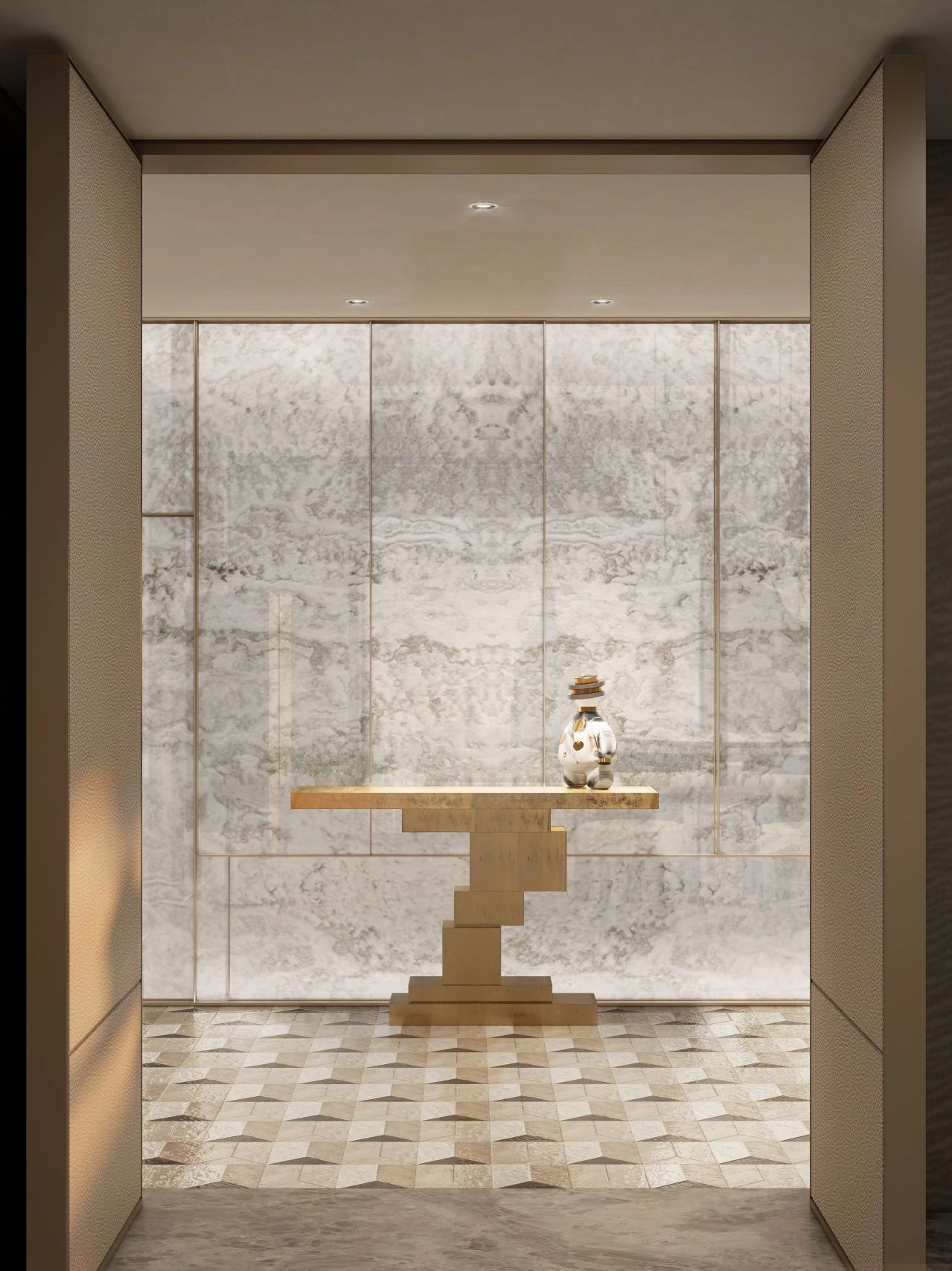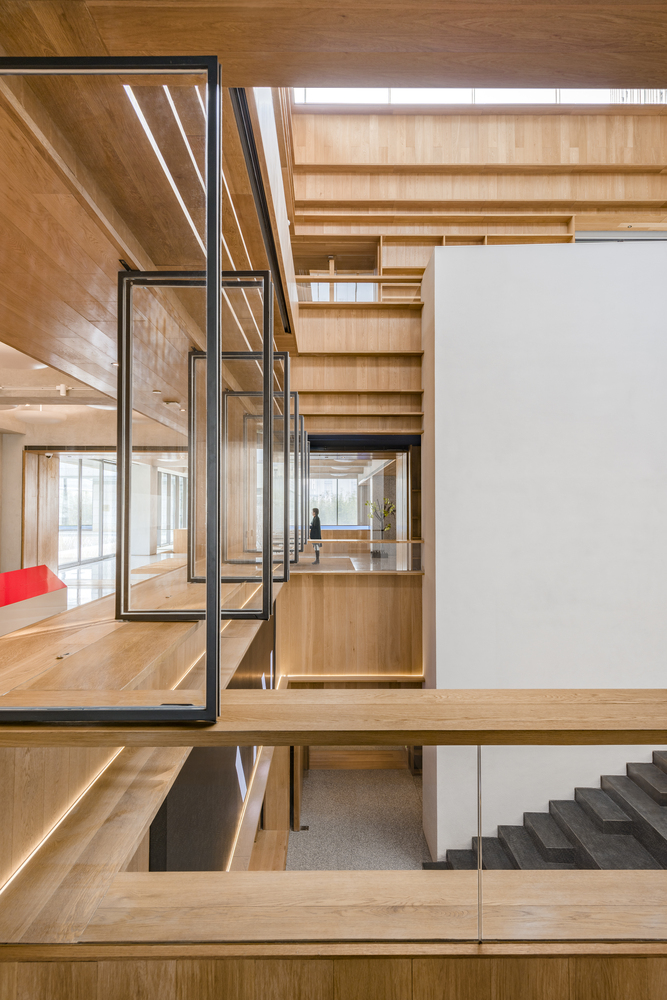Holy Cross House Thomas Balaban Architect
2015-02-13 01:00
架构师提供的文本描述。这座300平米的独立住宅坐落在这座城市的迎面而来的西南街区,在其坚固的工人阶级门面背后隐藏着丰富的空间复杂性。以邻里地区战后老兵的家为正式出发点,建筑师们开始建造一座同时适合并从其异质环境中脱颖而出的房子,而不需要模仿,也不牺牲项目的当代性质。
Text description provided by the architects. Located in the city's up and coming Southwest neighbourhood this 300 m2 detached house hides a rich spatial complexity behind its tough working class façade. Turning to the neighbourhood’s post-war veteran’s home as its formal point of departure, the architects set out to make a house that simultaneously fits in and stands out from its heterogeneous context without resorting to mimicry and without sacrificing the contemporary nature of the project.
© Adrien Williams
阿德里安·威廉姆斯


主要的挑战在于给生活空间带来光,因为这里的空间很紧,而且直接的阳光只能照射到它的中心。通过改变大多数两层住宅的传统垂直等级结构,并从房子的体积中划出一系列空间,该项目能够解决直射光线的需求,以及对维护隐私的担忧。通过把居住空间搬到楼上,房子在最需要阳光的地方最大限度地利用直射阳光。通过雕刻出房子的体积,在停车场中心的照明被拉到房子的中心,并为每个房间提供额外的私人户外空间。
The principal challenge lay in bringing light to the living spaces given the tight nature of the lot and the availability of direct sunlight limited to its center. By flipping the traditional vertical hierarchy found in most two storey homes and by carving out a series of spaces from the house's volume, the project was able to address the need for exposure to direct light and concerns about maintaining privacy. By bringing the living spaces upstairs, the house maximizes direct sunlight where it is needed most. By carving out of the house’s volume, the light available at the center of the lot is drawn down into the heart of the house and additional private outdoor spaces are provided for each room.
© Adrien Williams
阿德里安·威廉姆斯


Floor Plan


房子最引人注目的特征之一是交错的中央室外庭院,它的创建是为了让光线一直延伸到房子的最低层。所有房间都可以进入这个中心空间。不同层次的全高度窗户为庭院空间提供了一种戏剧性质,并培养了房主对彼此在整个房子中运动的意识。
One of the most striking features of the house is the staggered central outdoor courtyard, created to funnel light all the way down to the house’s lowest level. All the rooms have access to this central space. Full height windows at different levels provide a theatrical quality to the courtyard space and foster for the homeowners an awareness of each other’s movement throughout the house.
© Adrien Williams
阿德里安·威廉姆斯


Floor Plan


庭院的设计也优先考虑使用被动太阳能。空间的透明度和开放的中央庭院允许深穿透自然光,有效的自然通风和空气流动在受保护的小气候。与庭院平行,堆叠的楼梯与顶部朝北的开口相结合,在房子内提供了一种冷却烟囱的效果。这座房子最大限度地利用南面玻璃,以便在冬季获得直接的太阳能,并限制北面外墙的玻璃。辐射混凝土地板也作为一个小的热质量,有助于减轻外部温度波动。
The courtyard’s design also prioritizes the use of passive solar energy. The spatial transparency and open central courtyard allow for a deep penetration of natural light and for efficient natural ventilation and movement of air in the protected microclimate. In parallel to the courtyard, the stacked staircases combined with a north-facing opening at the top provide a cooling chimney effect inside the house. The house maximizes south facing glazing for direct solar gain in winter, and limits glazing on the north façade. The radiant concrete floors also serve as a small thermal mass helping to mitigate exterior temperature fluctuations.
© Adrien Williams
阿德里安·威廉姆斯


在外观上,房子是受约束的,光和单色,强调整体的形式,而不是组件和细节。为了统一形状,建筑师们寻找了一种天然颜色的材料,既可以作为屋顶,也可以作为墙壁的覆层-一种立式接缝铝覆层。漆成与金属覆层颜色相匹配的扁平混凝土面板被用作门窗周围微妙的口音。与凉爽的垂直表面形成鲜明对比的是,房屋的许多露台都覆盖着温暖的叶面装饰,突出了这些居住空间的户外延伸。
On the exterior, the house is restrained, light and monochromatic, emphasizing overall form over components and details. To unify the shape the architects sought a material in a natural colour that could serve as both roofing and wall cladding– a standing seam aluminium cladding. Flat concrete panels painted to match the colour of the metal cladding were used as subtle accents around doors and windows. In contrast to the cool vertical surfaces, house’s many terraces are clad in warm Ipé decking, highlighting these outdoor extensions of the living spaces.


与中央庭院所创造的空间复杂性形成鲜明对比的是,室内也保持了统一,在磨坊和中央楼梯上呈现出温暖的触感。浅色的,擦亮的混凝土地板和未铰接的白色墙壁把重点放在业主的艺术和设计物品的收藏。厨房是由两个元素组成的-岛和储藏墙-都是用相同的材料建造的:经过热处理的白橡树。丰富的巧克力颜色的木材削减自己从白色的墙壁和苍白灰色的地板。
In sharp contrast to the spatial complexity created by the central courtyard, the interior is also kept uniform, strategically articulated with warm touches appearing in the millwork and central stair. Pale, mat polished concrete floors and unarticulated white walls place the focus on the homeowners’ collection of art and design objects. The kitchen is simply organized around two elements - the island and the storage wall– both constructed from the same material: heat-treated white oak. The rich chocolate colour of the wood cuts itself out from the white walls and pale grey floor.
© Adrien Williams
阿德里安·威廉姆斯


强烈对比的时刻也出现在浴室较暗、图形化的色调中,以及透过穿透房屋外部的窗户可见的不断变化的植被中。这些建筑时刻有助于提高房子的戏剧性。
Moments of contrasting exuberance are also offered up in the darker, graphic tones of the bathrooms and in the changing vegetation visible through the windows perforating the exterior of the house. These architectural moments contribute to the house’s sense of theatricality.
© Adrien Williams
阿德里安·威廉姆斯










































Architects Thomas Balaban Architect
Location Montreal, Canada
Category Houses
Design Team Thomas Balaban + Jennifer Thorogood
Area 300.0 sqm
Project Year 2014
Photographs Adrien Williams
























